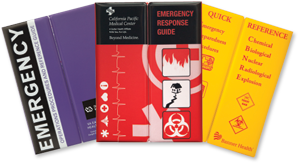Written by: Andy Altizer & Timothy Murphy
Benjamin Franklin once said, “By failing to plan, you are preparing to fail.” But, let’s face it – it doesn’t take s legendary statesman to understand the importance of thorough event planning.
The question is, what kind of plan should you have? Similarly, can the plans that are out there that go by a wide variety of names be used interchangeably, and does it even matter? Or, should there be more than one type of plan for a large special event?
Making Sense of the Alphabet Soup of Event Plans
Emergency or Event Action Plan (EAP), Emergency Operation Plan (EOP), Incident Action Plan (IAP), Emergency Response Plan (ERP), Operations Plan (OpsPlan), Security Plan and Venue Operations Plan (VEOP) are some of the common names referred to for special event planning. According to the Federal Emergency Management Agency’s Guide for All-Hazard Emergency Operations Planning, a jurisdiction’s emergency operations plan is a document that:
- Assigns responsibility to organizations and individuals for carrying out specific actions at projected times and places in an emergency that exceeds the capability or routine responsibility of any one agency, e.g., the fire department.
- Sets forth lines of authority and organizational relationships, and shows how all actions will be coordinated.
- Describes how people and property will be protected in emergencies and disasters.
- Identifies personnel, equipment, facilities, supplies, and other resources available — within the jurisdiction or by agreement with other jurisdictions — for use during response and recovery operations.
- Identifies steps to address mitigation concerns during response and recovery activities.
- As a public document, an EOP also cites its legal basis, states its objectives, and acknowledges assumptions.
Content Is More Important Than a Plan’s Name
Although an Emergency Action Plan, and an Emergency Response Plan, are often talked about with the same scope as an EOP, they tend to focus a bit more on the need for threat and risk-based planning. One could argue that an EAP is more tactical and designed for the person who must take action, where an EOP is more operational. However, the U.S. Department of Education Readiness and Emergency Management for Schools (REMS) Guide for Developing High-Quality School Emergency Plans and Developing Emergency Operations Plans for Institutions of Higher Education may use the word “EOP,” but in fact, they seem to suggest a way to incorporate a planning guide that is tactical, operational and strategic planning needs.
So, perhaps the name is not nearly as important as the content. Imagine that! Regardless of the name, a commonsense objective should be to keep it relatively simple and understand that “more is not always better.” Publish a 175-page EOP and expect it to sit on a shelf. Too many plans are simply words on paper or a check in the box.
A Venue Emergency Operations Plan (VEOP) is very similar to an EOP (or was it an EAP?), but focuses on a specific venue, like a football stadium. This plan will be even more threat- and risk-based, and it will generate specific response protocols for that venue.
Coordinate All of Your Relevant Event Plans
So, the question is for special events, do you still need to have an Incident Action Plan if you have a detailed EOP or VEOP?
It is important to make sure the Incident Action Plan is tied to the ops plan-VEOP/EOP (whichever one you choose). The VEOP/EOP is a plan that is in place daily and encompasses the entire venue and addresses all types of responses. It should be updated annually.
- The purpose of an IAP is to lay out the plan for an operational period (timeframe).
- The IAP uses the standard Incident Command System for just about everything, including organizational charts, terminology, and relevant forms. All staff should be advised of their specific assignments and their chain of command. Everyone should only report to one person.
- The IAP gives clear and simple instructions, tasks and objectives for the staff members working the incident/event.
- IAPs gets into the specifics about security access control points (ACP), traffic control points (TCP), communications and staffing.
- Staff assigned to a specific post or location are advised of job expectations and tasks.
- Personnel working the event must be briefed and given a copy of the IAP. They need to know not only where they are assigned but where everyone else is assigned.
- The IAP and VEOP complement each other. The IAP does not need to list detailed response protocols since that is in the VEOP (example: bomb threat, active shooter, severe weather response).
- Staff working the event should be familiar with the VEOP, if not they should be briefed during the pre-event briefing of the IAP.
The pre-event briefing of the IAP is critical to ensure “the plan” is implemented effectively.
- There should be updates on any recent or last-minute changes (staffing, times, or tasks).
- It should be made clear what time staff should be on post, take breaks and expect to end their shifts.
- The communications plan is particularly important and should be understood by everyone in the IAP, especially as it relates to a multijurisdictional event.
- Any new or specific threats should be discussed. Or, simply reiterating a more likely scenario that’s covered in the VEOP, but is worth reminding everyone (example, when thunderstorms are likely, going over the lightning triggers and evacuation duties of each person.
- The pre-event briefing is an excellent opportunity for just-in-time training (example: use of new walk-thru metal detectors or best practices for bag checks).
- Staff should be introduced to any new or outside agency names and faces (especially outside agencies, special ops teams, and plain clothes police carrying weapons.)
- If credentials are being used, staff needs to see them and know what they mean (example: all access, field access, media access, and so on)
- Opportunity for questions.
Don’t Forget the After-Action Report
Without going into details, we must always follow up any event with an after action report that will capture lessons learned that can be incorporated in all of the relevant plans.
Regardless of the “type” of plan used for special events, all plans must be consistent with all other relevant plans. For example, the IAP should be in line with the fire and emergency services response plan (example: if an access control point is also the location of the fire department connection (FDC) that should be addressed), departmental general orders (GOs) and the overarching campus emergency operations plan.
Andy Altizer is the emergency preparedness coordinator for the Westminster Schools in Atlanta, Georgia, and Captain Timothy Murphy is special operations commander at Kennesaw State University.
Article reprinted with permission from Campus Safety Magazine (http://www.campussafetymagazine.com/). To sign up for their eNewsletter, visit https://www.campussafetymagazine.com/newsletter-subscription/







